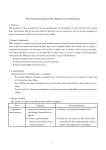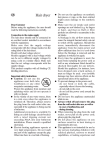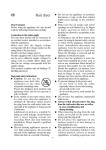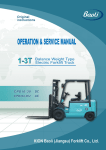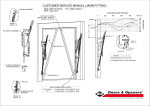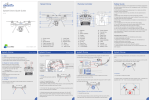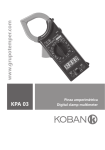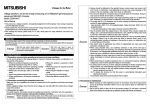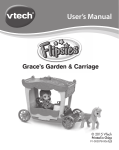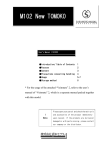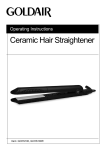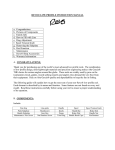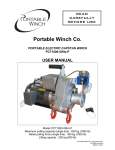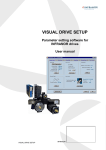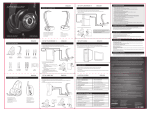Download SG Standard for Shoes Type Riding Gear with Wheels
Transcript
SG Standard for Shoes Type Riding Gear with Wheels 1. Purpose The purposes of this standard are to set requirements for the quality of safety of shoes type riding gear with wheels and for the prevention of incorrect use by consumers, and to prevent damages on general consumers’ bodies and to ensure safety of life. 2. Scope of Application This standard is applied to the gears and similar products which have been equipped with shoes or are intended to be used by fixing shoes to them, are intended to be used by a single user, are driven only by human strength, travel by the rotation of wheels (hereinafter collectively the “Riding Gear”), and do not correspond to any of the following: Products designed to be used on non-paved road Products with drive system such as chains and belts 3. Categorization Categorization of the Riding Gear is as follows. ・ For Young Children: Products intended to be used by those who are 18 months or older and who weigh less than 20kg. ・ For Children: Products intended to be used by those who weigh 20kg or more and less than 50kg. ・ For General Use: Products intended to be used by those who weigh 20kg or more and less than 100kg. 4. Quality of Safety The quality of safety of the Riding Gear shall be as follows. Item Standard Checking Method 1. Appearance 1. Appearance and structure of and structure the Riding Gear shall be as 1. Check by the method described below. follows. (1) It has a smooth finish (1) Check by eye, hand, etc. This check shall without sharp points, burrs, be performed after performing the checks cracks, scratches, under 3. Strength and 4. Durability. deformation, etc. that may cause physical injury when 1 Item Standard Checking Method used. (2) Sharp points such as bolt (2) Sharp points such as bolt heads with a heads protruding from the cross-sectional area of 100mm2 or less that outside surface shall be protrudes 10mm or more to the outside located where users do not surface shall be located where it does not touch. contact a test cylinder with a diameter of 50mm and a length of 75mm as shown in Figure 1. A head of a bolt with a 10mm 以上突き出 cross-sectional 2 2 た断面積 100mm 100mm or less that is 以下のボルトの頭 protruded 10mm or more など Ф50mm Figure 1. Method for Checking a Sharp Point Using a Test Cylinder (3) Those with dedicated shoes (3) Check by eye, hand, etc. This check shall shall not have any sharp be performed after performing the checks points protruding inside of under 3. Strength and 4. Durability. the shoes or any parts that excessively compress feet. (4) In case of movable parts (4) Check by scale, etc. This check shall be (excluding fastenings) of performed after performing the checks those for young children under 3. Strength and 4. Durability. where two or more parts are connected, the gap between 2 Item Standard Checking Method these two or more parts shall not be 5mm or more and less than 12mm. (5) Connection, assembly, etc. of (5) Check by eye, hand, manually moving, etc. each part are fine and there This check shall be performed after are no backlashes. performing the checks under 3. Strength and 4. Durability. (6) Fastenings for fixing wheels (6) After removing fastenings as needed, and movable parts shall have check by eye that nylon nuts, claw nuts, a preventive measure against etc. are used. looseness. (7) The Riding Gear shall have a (7) Check by eye. brake. 2. Friction resistance 2. The static friction coefficient 2. Place the Riding Gear on a stainless steel in the direction perpendicular plate with a smooth surface, and from to the direction of rotation of above, apply a force which is the sum of wheels (limited to those 400N and the gravitational force that acts contacting a road surface) on the mass of the Riding Gear. Under this shall be 0.3 or more. condition and using a push pull gauge, etc., measure the magnitude of the force generated by horizontally pulling the Riding Gear until it starts moving. Measure it five times. From the measured values, calculate an average value of three forces excluding the largest and the smallest values, and calculate the static friction coefficient by dividing with a force to which the average value is added. This check shall be performed after performing the check under 4. Durability. 3 Item 3. Strength Standard Checking Method 3. The strength of the Riding 3. Check by the methods described below. Gear shall be as follows. (1) (1) 1) For those with dedicated 1) Check by fixing the frame of the Riding shoes, the attaching Gear and applying a force of 1,000N at a strength of the dedicated speed of 20mm/min. shoes shall be 1,000N or more. Also, after removing the force, there shall be no damages on each part that affect the use. 2) For those without dedicated 2) Check by fixing the Riding Gear, shoes, the attaching applying the force specified in Table 1 to strength of belts, etc. for a belt at a speed of 20mm/min, and then attaching shoes shall be as removing the force. shown in Table 1. Also, after removing the force, there shall be no damages on each part that affect the use. Table 1: Attaching Strength of Belts, Etc. Belt position Other than Magnitude of Strength 400N or more the rearmost part Rearmost 500N or more part (2) Check by making the Riding Gear swing (2) There shall be no damages that affect the use when the like a pendulum while using a pole as its impact energy specified in axis, hitting a test wall with the Riding Table 2 is applied to the Gear, and applying an impact energy as frontal part of traveling shown in Figure 2. 4 Item Standard Checking Method direction (if there is a removable brake attached in the front, apply it after removing the brake). If there is a brake in the front, the brake shall not come off when the impact energy specified in Table 3 is applied to the brake. Table 2: Frontal Impact Energy Impact Energy Category For young 38J children Figure 2. How to Apply Frontal Impact For children 90J For general use 135J Energy Table 3: Frontal Brake Impact Energy Impact Energy Category For young 25J children For children 60J For general use 90J (3) There shall be no damages (3) Check by making the Riding Gear swing that affect the use when the like a pendulum while using a pole as its impact energy specified in axis, hitting a test wall with the Riding Table 4 is applied to the Gear, and applying an impact energy as bottom of wheels. shown in Figure 3. If there is a brake at the rear, the brake shall not come off when the impact energy 5 Item Standard Checking Method specified in Table 5 is applied to the brake. Table 4: Bottom Impact Energy Category Impact Energy For young children 38J For children 90J For general use 135J Table 5: Rear Brake Impact Energy Category Impact Energy For young children 14J For children 30J Figure 3: How to Apply Bottom Impact For general use 50J Energy (4) Check by dropping a weight specified in (4) In case of those other than for young children and those Figure 4 and Table 6 from the height without dedicated shoes, specified in Table 6 onto the position there shall be no damages specified in Figure 5 which is on the that affect the use when the surface to which a shoe is fixed. weight specified in Table 6 is dropped from the height specified in Table 6 onto a surface to which a shoe is fixed. Ф100mm Figure 4: Shape of Weight 6 Item Standard Checking Method Table 6. Mass and Drop Height of Weight Category For Mass of Drop Weight Height 10kg 150mm Height Children For 15kg 250mm General Use Figure 5: Fall Position 4. Durability 4. Check by the methods described below. 4. The durability of the Riding Gear shall be as follows. (1) Place the Riding Gear on the test drum (1) There shall be no damages that affect the use when (attach obstacles to the test drum as making the Riding Gear travel shown in Figure 6) with the wheels for three hours with the contacting the drum and with the weight weight specified in Table 7 of the specified mass in Table 7 placed on fixed to it. the Riding Gear. Next, check by rotating the test drum at a speed equivalent to the Riding Gear’s traveling speed of approx. Table 7: Mass of Weight Category For Young Mass of 0.5m/sec. and making the Riding Gear Weight travel in a way that it passes the obstacles every 1.5sec. 20kg Children For Children 40kg For General Use 60kg 7 Item Standard Checking Method 40mm 30mm 12.5mm 45° Rotationドラム回転方向 of direction of a drum Figure 6: Shape of Obstacle (2) For those with a mechanism by which they obtain a driving force using the movement of parts, etc. which fix frames or wheels (hereinafter the “Driving Mechanism”), there shall be no damages that affect the use when the Driving Mechanism is operated as specified in Table 8. Table 8: Number of Operation Category Operation Method For Have the Driving Young Mechanism Children operate for 5,000 times using a force by which the operation is completely performed or a 8 (2) Check by eye and hand. Item Standard Checking Method force of 200N whichever is smaller. For Have the Driving Children Mechanism operate for 5,000 times using a force by which the operation is completely performed or a force of 500N whichever is smaller. For Have the Driving General Mechanism Use operate for 5,000 times using a force by which the operation is completely performed or a force of 1,000N whichever is smaller. (3) Check by eye and hand. (3) In case of movable parts, other than the Driving Mechanism, that have points which bear force due to a user’s weight when traveling, there shall be no damages that affect the use when these points are repeatedly operated for 5,000 times. 9 Item 5. Material Standard Checking Method 5. The materials for the Riding 5. Check by the methods described below. Gear shall be as follows. (1) Check by the test method specified by the (1) For those with dedicated shoes for which fiber is used Section Regarding Formaldehyde in the inside of the shoes, the Appendix 1 of Article 1 of the Ordinance of materials shall conform to the Ministry of Health and Welfare No.34 the Section Regarding of 1974 based on the Act on Control of Formaldehyde in the Household Products Containing Harmful Appendix 1 of Article 1 of the Substances (adhesives used for, Ordinance of the Ministry of underwear, nightwear, gloves, and socks Health and Welfare No.34 of (excluding those for infants and toddlers 1974 based on the Act on 24-month-old or younger), Japanese socks, Control of Household wigs, fake eyelashes, fake beards, or sock Products Containing glue). Harmful Substances (adhesives used for, underwear, nightwear, gloves, and socks (excluding those for infants and toddlers 24-month-old or younger), Japanese socks, wigs, fake eyelashes, fake beards, or sock glue). (2) For those for young children, (2) Synthetic resin parts as well as parts materials that have no painted with synthetic resin paint shall harmful effect on human conform with the Article 4 Provision on body shall be used. Toys of the Public Notice of the Ministry of Health and Welfare No.370 based on the Food Sanitation Act. 5. Indications and User’s Manual Indications on the Riding Gear and a user’s manual of the Riding Gear shall be as follow s. 10 Item 1. Indications Standard Checking Method 1. Indicate the following 1. Check by eye and hand. information on a product using means that do not easily wear off. (3) and (4) shall be indicated where easily viewable on the outside surface of packaging as well. (However, they may be omitted if these indications on a product are visible through the outside surface of packaging.) (1) Name or an abbreviated name of an applicant (manufacturer, importer, etc.) (2) The year and month of manufacture or importation or their abbreviation (3) Intended user’s weight. The lower limit of an intended user’s age in case of those for young children. (4) A size of a shoe or a foot corresponds to gear. (5) Precautions for use (a) Instructions to use helmets, knee pads, elbow pads, and gloves. (b) Instructions not to use gear where its use is prohibited. 2. User’s Manual 2. Attach a user’s manual to a product that clearly indicates 11 2. Check that it does not use technical terms and it is easily comprehensible for general Item Standard Checking Method the following information. (1) through (3) shall be indicated where easily viewable such as the cover page, etc. of a user’s manual, and make (4) more easily recognizable by placing safety warning marks like ( ) or by other measures. Make (4)(a) through (c) especially stand out compared to other precautions by using boxed texts, bold font, and/or larger fonts. (1) Intended user’s weight. The lower limit of an intended user’s age in the case of those for young children. (2) A size of a shoe or a foot corresponds to gear. (3) Instructions to make sure to read the user’s manual and to keep it after reading. (4) Precautions for use. (a) Instructions to use helmets, knee pads, elbow pads, and gloves. (b) Instructions to use gear while paying sufficient attention to automobiles, pedestrians, etc. and not to use it where its use is prohibited. (c) Instructions to sufficiently practice in a safe place before using and to use it 12 consumers. Item Standard Checking Method where there is supervision of a guardian (this is applied only to those for young children). (d) Instructions to check for any damages and deformations before using and not to use gear if there is any. (e) Instructions to stop using when it feels uncomfortable after wearing gear. (f) Instructions that putting on and taking off of gear shall be done by a guardian and to check that the gear is properly equipped (this is applied only to those for young children). (g) Instructions to replace wheels when they are worn out because they tend to sideslip when they are worn. (h) Instructions not to use on wet surfaces because it may cause unexpected sideslips and it is difficult to travel on such surfaces. (i) Instructions to reduce speed by maneuvering gear and to use the brake after speed is sufficiently reduced. (j) Because brakes and wheels 13 Item Standard Checking Method may become hot right after using, instructions not to touch them until they cool down. (k) Instructions to use with sufficient attention because even small obstacles, bumps, and dips in roads may be causes of fall. (l) Instructions to use with sufficient attention because a slight gap may be a cause of fall. (5) How to use, maintain, inspect, and store (a) Parts which especially require maintenance including replacement of expendable parts, as well as maintenance methods. (b) Parts which especially require inspection, inspection methods, as well as how to handle defects. (c) Information particularly necessary for the purpose of storing. (6) Statement that the SG Mark system is a compensation system for bodily injury caused by defects of this product. 14 Item Standard Checking Method (7) Name, address, and phone number of a manufacturer, importer, or distributor. 15















